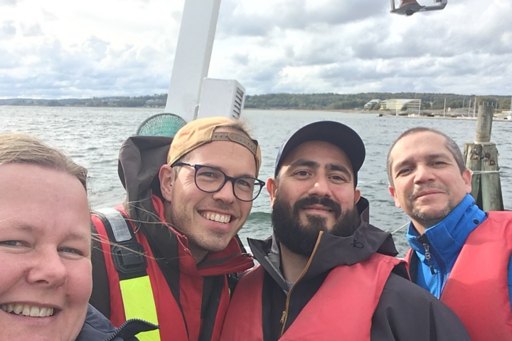- Home
- News and events
- Find news
- How much chemical pollutants can be found in the ocean by the Swedish west coast?
How much chemical pollutants can be found in the ocean by the Swedish west coast?
What priority chemical contaminants can be found in the marine environment? In October, FRAM conducted a field campaign by the Swedish west coast to find out.
There are more than 2700 chemical substances (or groups of substances) identified as potential contaminants in the marine environment according to a report from JRC. The identified substances came from main lists of priority chemicals compiled by relevant global conventions (e.g. International Maritime Organization), and European legislations (e.g. Water Framework Directive, Marine Strategy Framework Directive). But can all those chemicals actually be found in marine waters?
Read more about potential chemical contaminants in the marine environment, JRC 2017
In FRAM we aim to explore the pollution status of aquatic ecosystems. In October 2020, a team from FRAM, including researchers Åsa Arrhenius, Pedro Inostroza, and Julian Gallego from the University of Gothenburg and Eric Carmona Martinez from the Helmoltz Centre for Environmental Research, UFZ, in Germany, set out to sea to conduct an extended field sampling.

The main aim was to see whether it was possible find the highlighted priority pollutants and if there are emerging chemicals that may cause concern in the Swedish west coastal area. Previous monitoring work in the area have indicated that there is a “widespread blanket of diffuse pollution” and that thresholds are commonly exceeded both for individual compounds and mixtures.
Read more about the chemical monitoring of Swedish coastal waters made in 2017.
– For this field campaign we chose the area of Stenungsund that was also part of the previous monitoring study, says Åsa Arrhenius.
The municipality Stenungsund is located directly by the Swedish west coast and the area includes the biggest chemical industry cluster in Sweden, frequent shipping and pleasure boat activity. It also hosts a middle-sized wastewater treatment plant with 16 500 people connected. All these different activities contribute to the chemical cocktail in the coastal area.
The team sampled six sites in the Hakefjorden and Askeröfjorden outside of Stenungsund, ranging from Jörlanda in south to Svanesund in north. In addition to exploring what contaminants they could find, they also tried to find out where they come from. For this reason, the team sampled two freshwater creeks and the outlet from the local wastewater treatment plant Strävliden. The creeks were chosen to be one from a more urban area, influenced by industrial activities, and one from a more rural area, influenced by agriculture. Both creeks are expected to be influenced by traffic and road run-off.
In total, more than 100 litres of water were sampled from each site. This will be analysed with respect to organic and inorganic pollutants, nutrients and physico-chemical properties. In addition, samples for environmental DNA (eDNA) were taken to explore potential links between community composition and the chemical cocktails found in the water. In parallel to the main sampling, a test of offshore sensors was tested in the proximity of the sampling sites to get a general impact of input of anthropogenic substances in the water.
The work was done in close cooperation with researchers from the FRAM Centre and the Department of Effect-Directed Analysis from the Helmoltz Centre for Environmental Research, UFZ, in Germany.
This sampling campaign is a part of our larger case study in the Stenungsund area covering not only monitoring of environmental status but also connecting to ongoing activities in the area, relevant chemical policies and management strategies.
